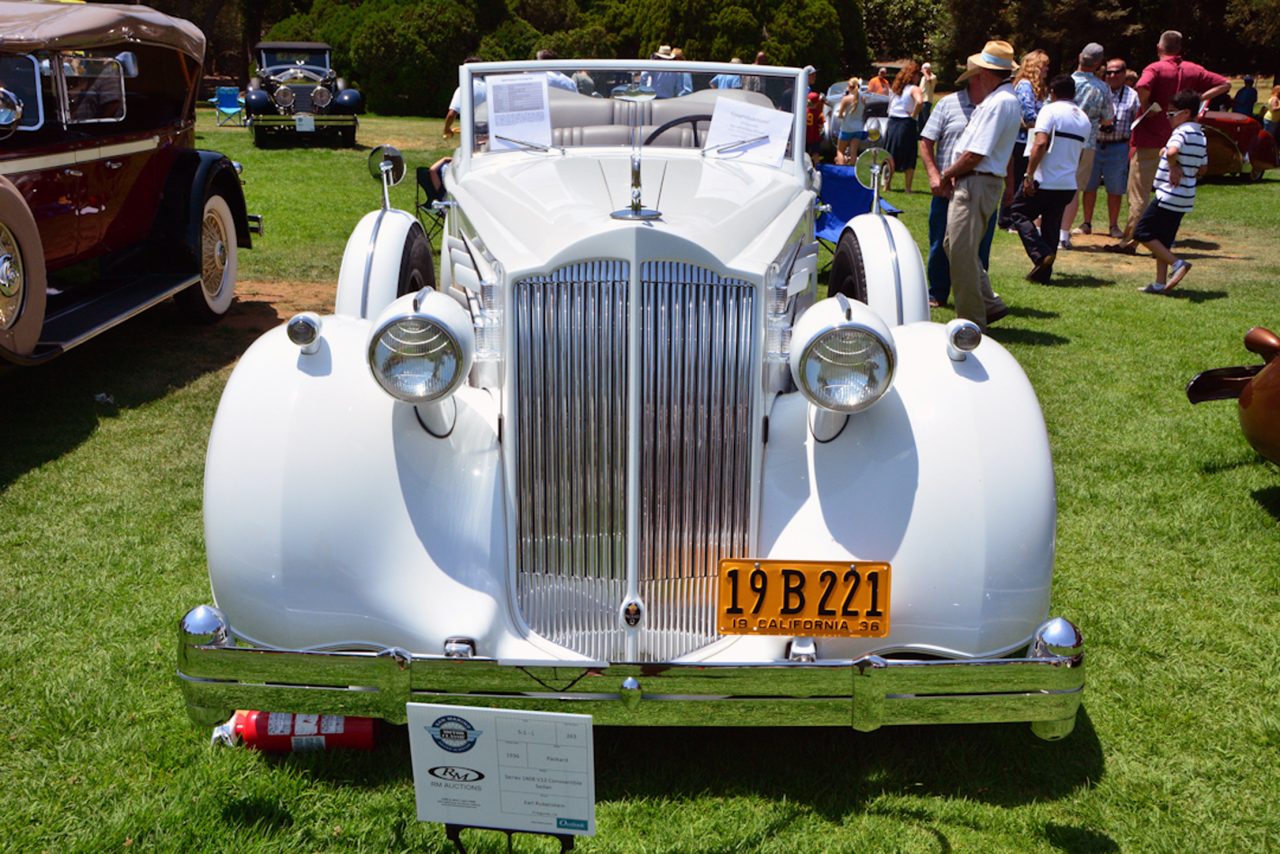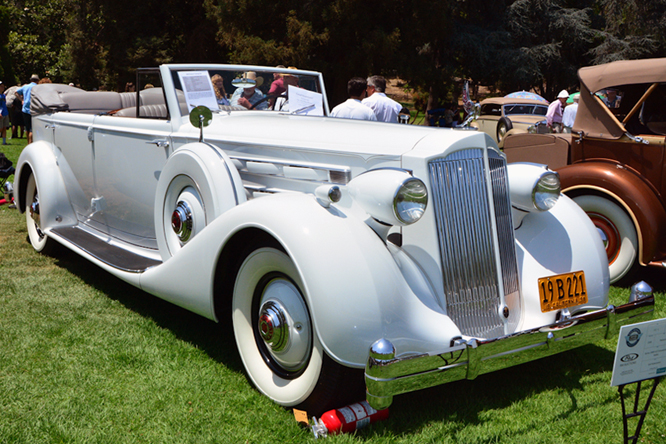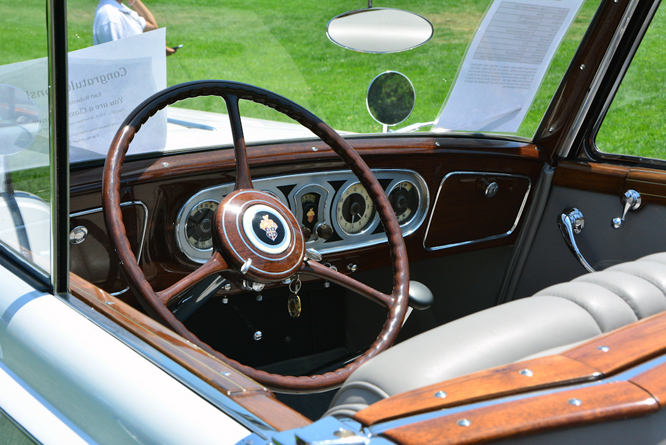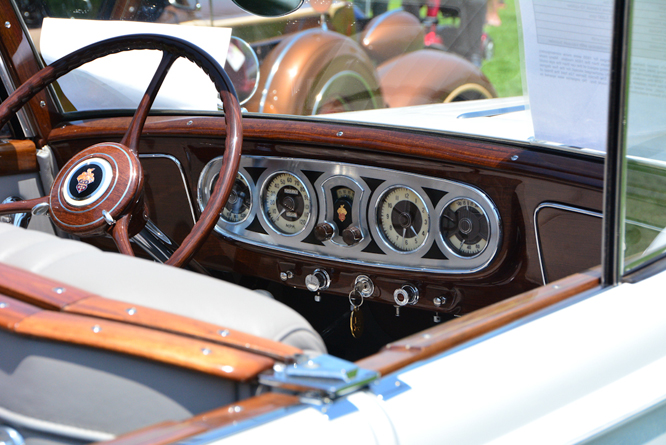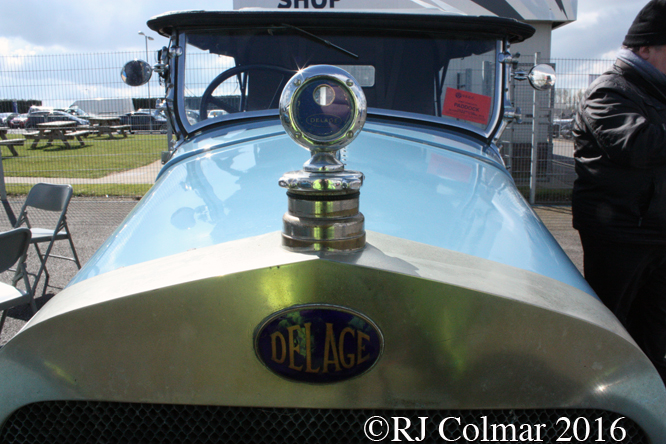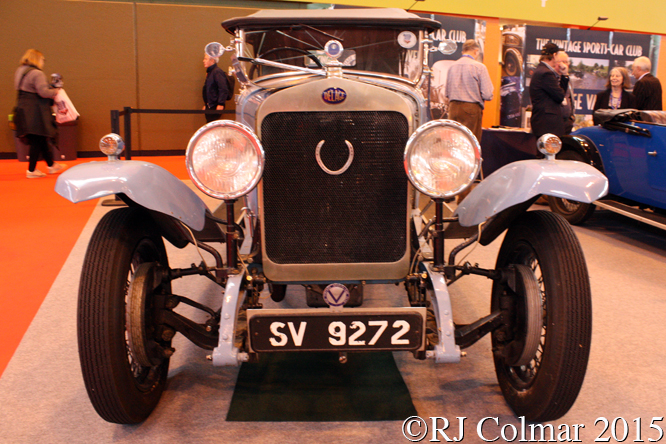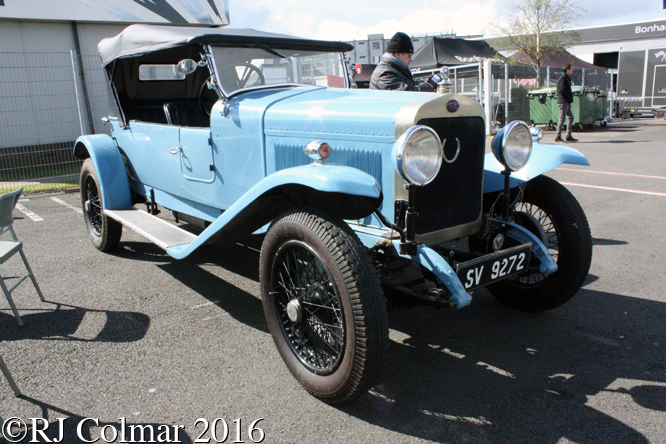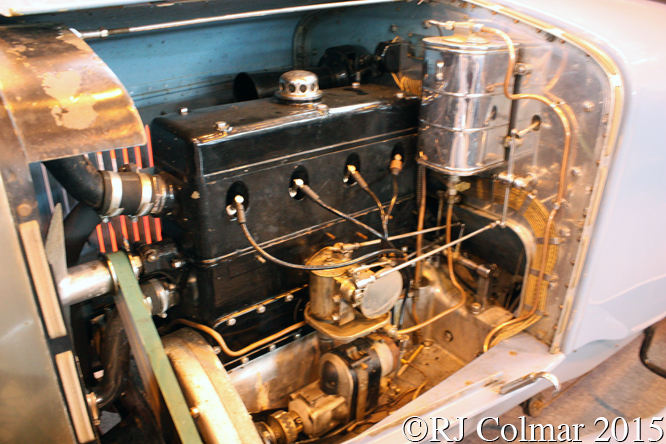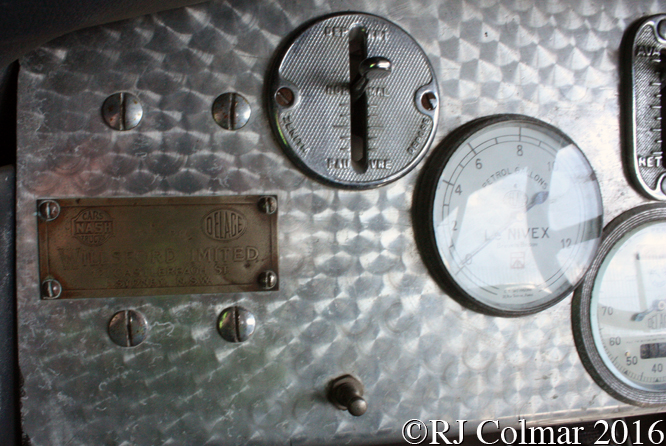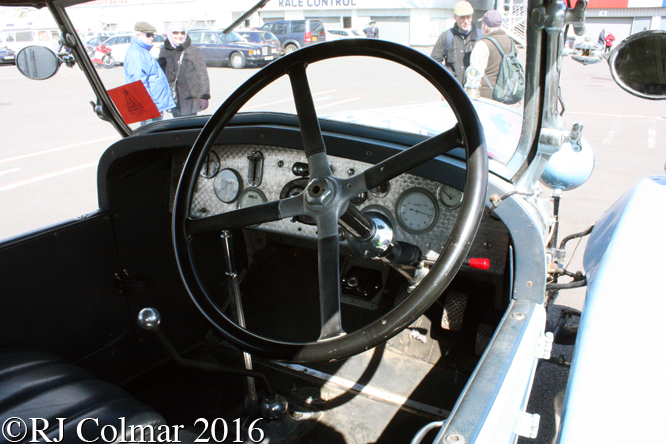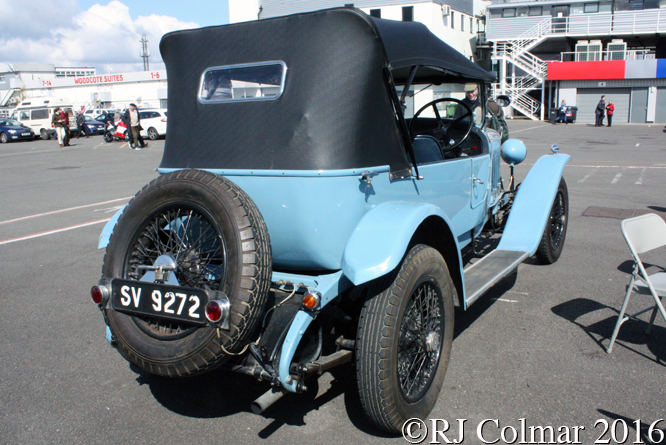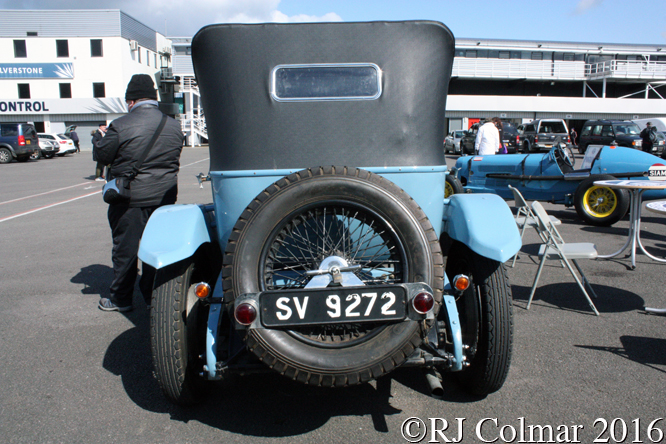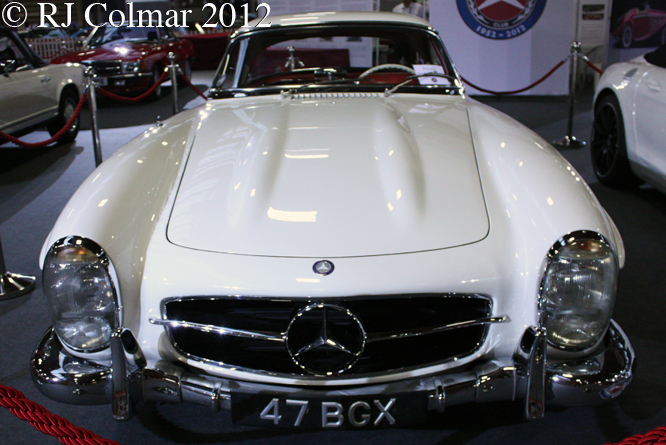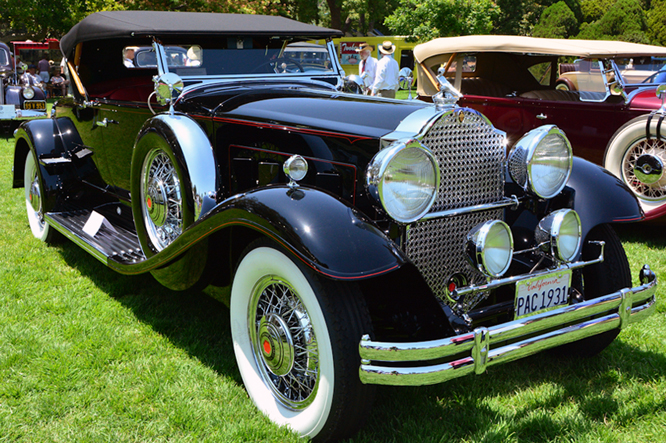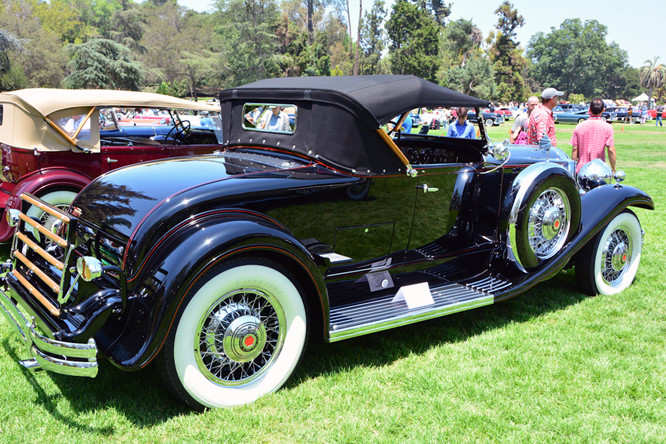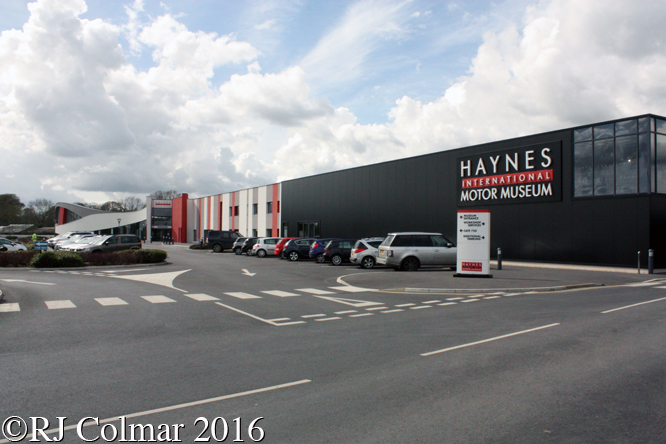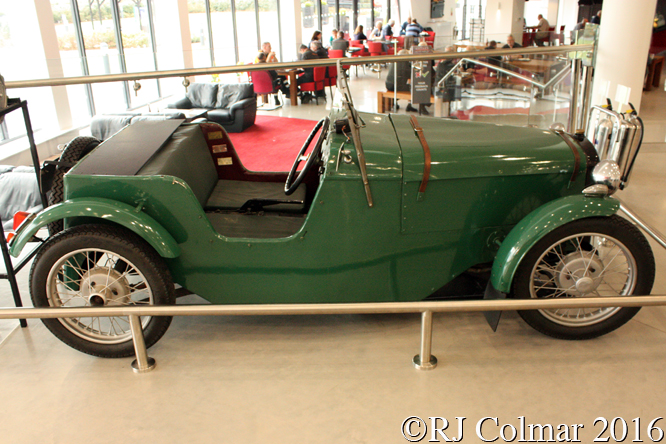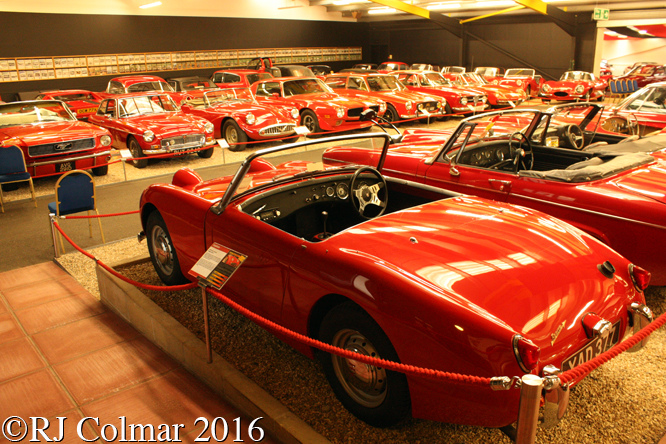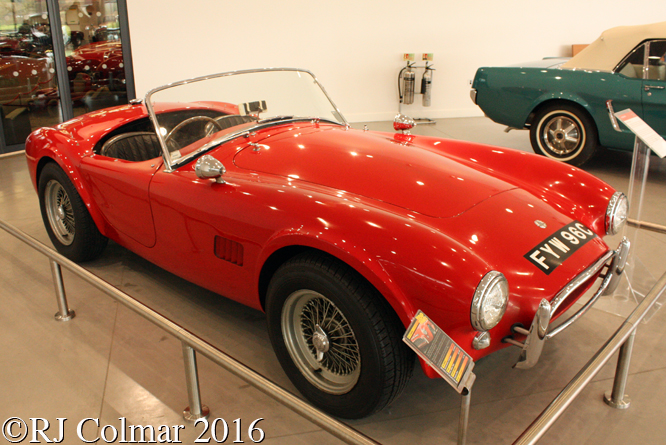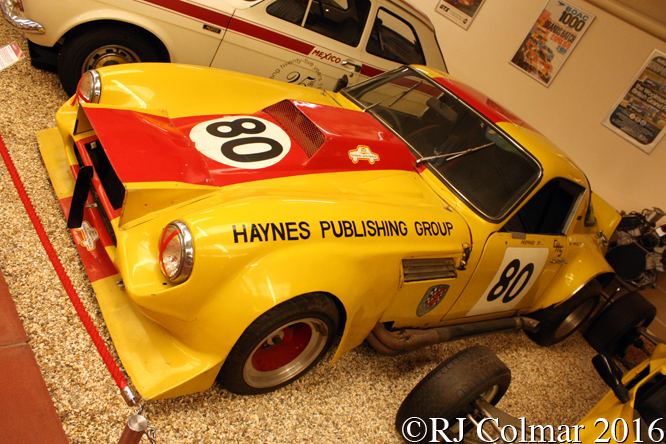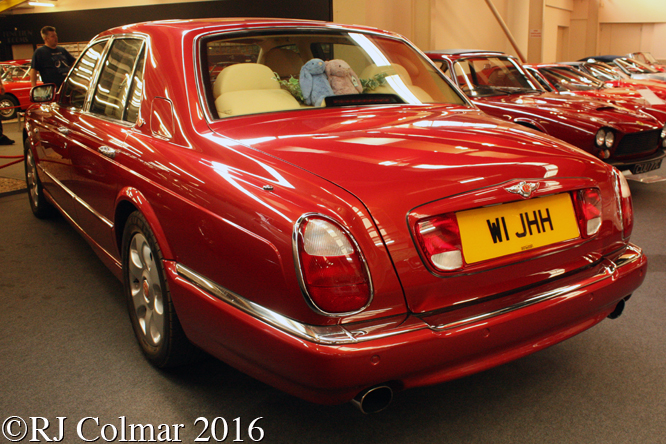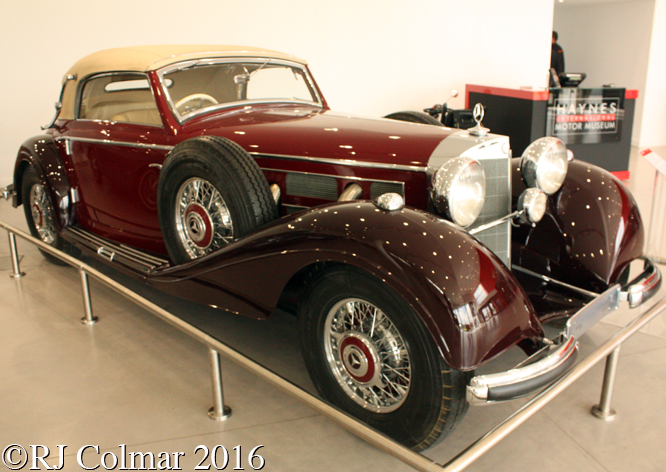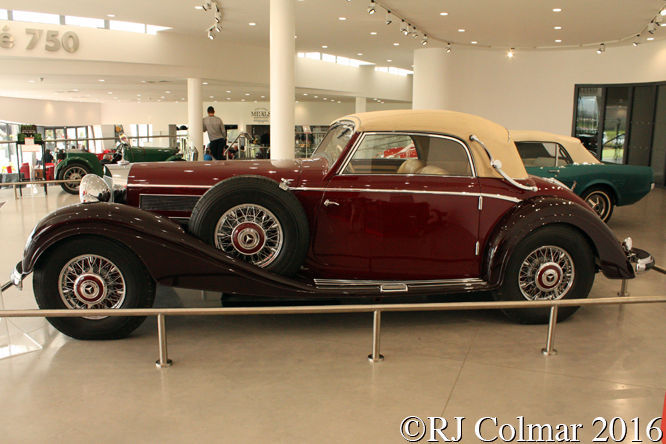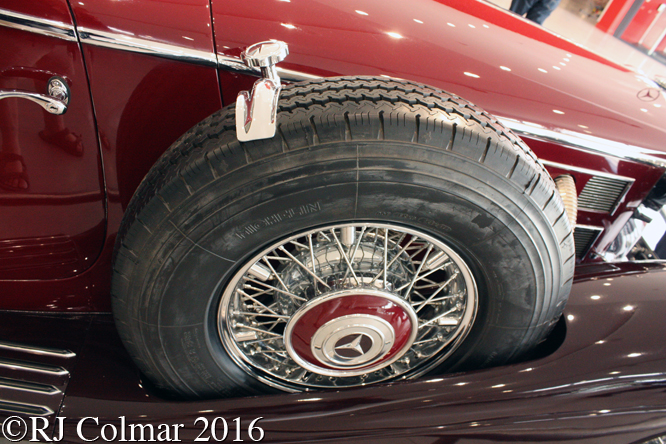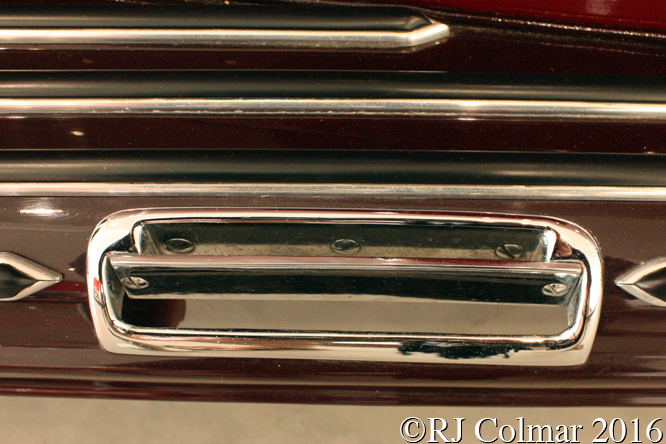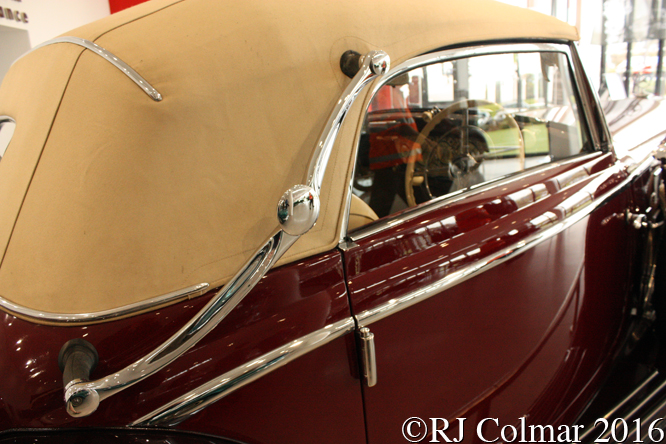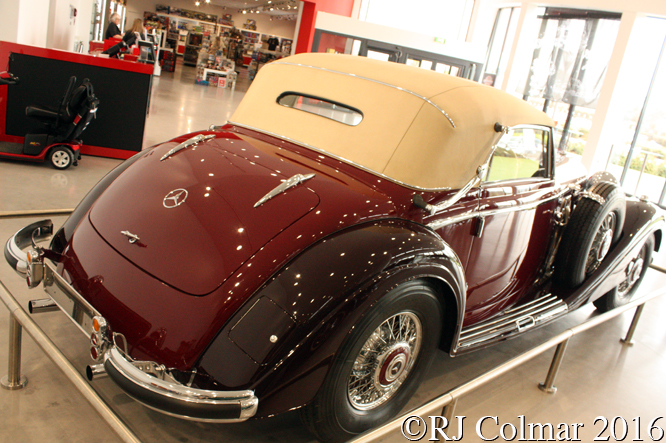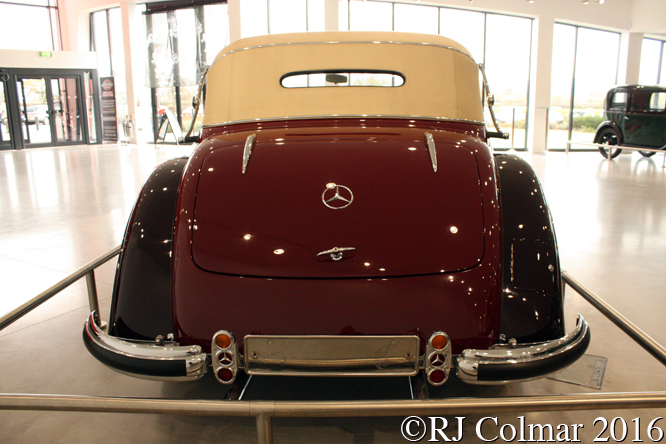Howard Marmon founded the Marmon Motor Company which was owned by Nordyke Marmon & Company of Indianapolis, Indiana in 1902.
By 1909, the year Indianapolis Motor Speedway, IMS, held it’s first events, Marmon were manufacturing a 32hp 270 cui four cylinder Model 32.
I believe Bruce Keen led a trio of such cars to 3rd, 4th and 5th place finishes in the 1909 300 mile Wheeler-Schebler Trophy Race that was called after 235 miles, when the track began to break up and Bruce had struck a pot hole and struck a bridge support that gave his mechanician James Schiller a fractured skull.
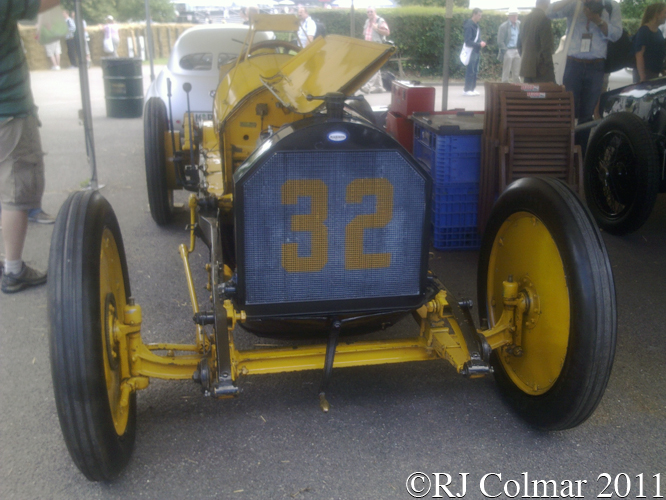
Jackson driver Leigh Lynch was running 14 laps clear of the Marmons when the race was called, though the trophy was withheld and victory never officially declared out of respect for the two spectators and mechanician Claude Kellum who were killed in an earlier accident involving Charlie Merz’s #10 National.
Over the winter IMS repaved it’s fragile track surface with 3.2 million 10 lb Indiana bricks, earning the venue it’s Brickyard nick name and the performance of the four cylinder Marmons improved such that Ray Haroun won the now 200 mile 1910 Wheeler-Schebler race in his #33 Marmon and became the first official winner of the Tiffany designed Trophy.
During the same winter of 1909/10 founder and chief engineer Howard Marmon working with Ray Harroun, also a mechanical engineer known as “The Little Professor”, developed two Model 32 chassis into open wheel race cars for the 1910 AAA season for races permitting non stock vehicles.
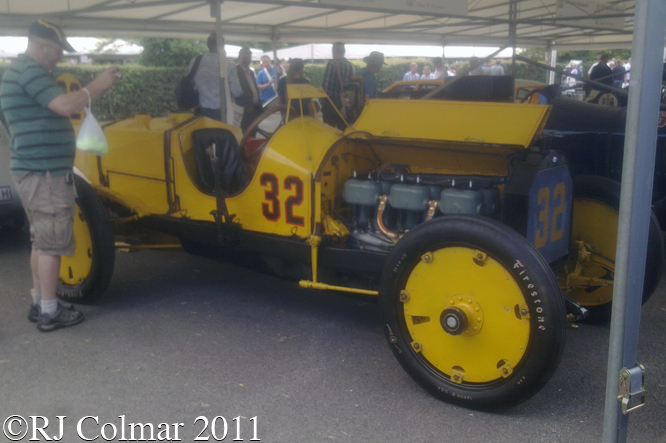
On today’s featured car, which became known as the Marmon Wasp, built to compete in the under 450 cui open class two extra cylinders were added to the Model 32 four cylinder engine bring it’s capacity up to 447 cui / 7,325 cc.
I suspect the lesser known and sleeker Marmon Yellow Jacket was built to compete in the under 300 cui open class, Ray won the 1910 Remy Brassard Trophy for such cars at Indy, but otherwise I know next to nothing about it other than it first appeared being tested in March 1910, if you know anything about this car please do not hesitate to chime in below.
Two days after his victory in the Wheeler-Schebler Trophy and on the same day as his Remy Brassard win, while testing the #32 Wasp at Indianapolis a tyre blew entering the north east turn which sent Ray and the Wasp into the wall at a reported 78 miles an hour.
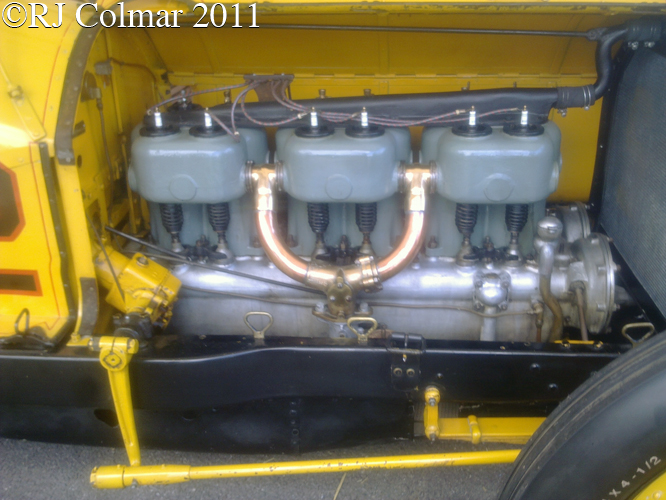
The damage looked worse than it was and in June 1910 the Marmon concern were reported as being “much elated” at how easily the Wasp was repaired, I believe Ray drove it to victory in three open class races at the opening meeting at Churchill Downs, otherwise known as the home of the Kentucky Derby, in 1910.
During the course of 1910 Ray also won the 200 mile race at Atlanta, and 100 mile race at Playa del Rey in Los Angeles and at the end of the year Chris G. Sinsabaugh, an editor at Motor Age named Ray as de facto National Champion based on merit and Ray’s race performances, this was not a title recognised by the AAA contest board who did not keep any score of points for a championship at that time.
In 1911 IMS switched from running a multi weekend multi race strategy to running a single race every year on Decoration Day, known as Memorial Day since 1967, weekend called the International 500-Mile Sweepstakes or Indy 500 that these days is marketed with the strap line “The Greatest Spectacle in Racing”.
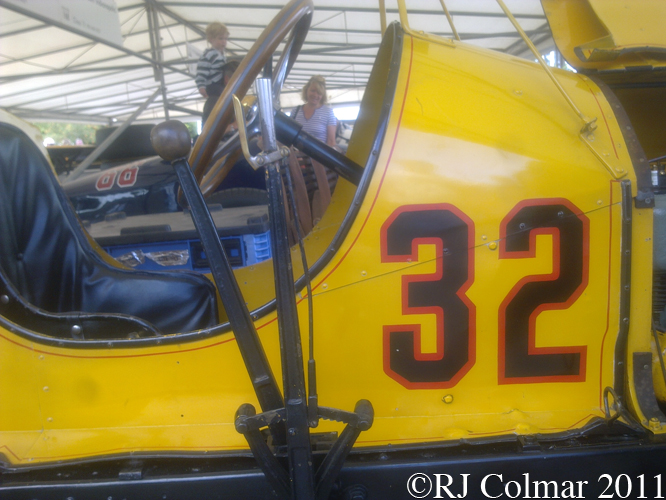
For the first running of the Indy 500 the Wheeler-Schebler Trophy was replaced by the Borg Warner trophy and the race was open to cars with a maximum engine capacity of 600 cui / 9832 cc that competed for $25,000 in prize money with $10,000 going to the winner.
Ray Harroun had wanted to stop driving race cars at the end of 1910, but was persuaded by Marmon to drive the Wasp one more time, he said he had been offered a dozen other drives for the inaugural Indy 500 and chose the Wasp, that had one of the smallest engines of any car in the race, only because he had never opened it up to it’s maximum potential in 1910 and that he was knew he was not experimenting with anything untried.
Forty cars met the 75 mph qualifying speed required from a flying start along a 1/4 mile distance of the front straight and Ray’s 28th starting position was determined, as were all the others, by the order the entries, of the qualifiers were, received in.
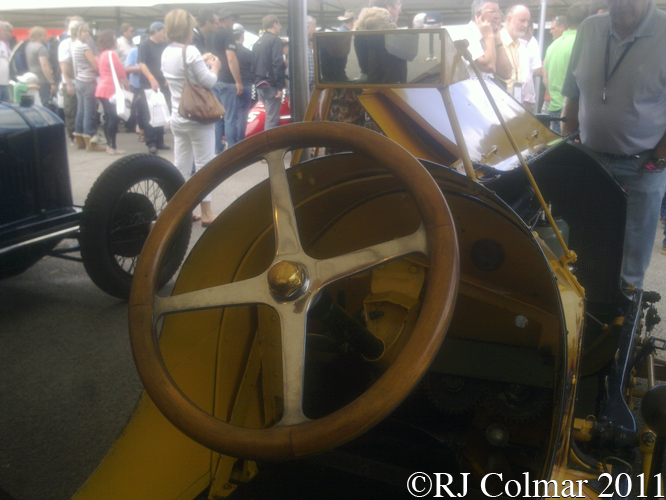
During the month of practice for the 500 The Little Professor determined that by running at as close to 75 mph laps as possible his reduced tyre wear would give him a race winning advantage over the whole race distance.
Before the race objections from his fellow competitors, to his running without a riding mechanician who could warn him of vehicles approaching from behind, saw Ray fit a 3″ by 8″ mirror over the cockpit cowling so that he could see his competitors.
Running his 75 mph laps as planned Ray handed the Wasp, running in second place to the #28 FIAT driven by David Bruce – Brown, over to his relief driver 22 year old Cyrus Patschke on lap 64.
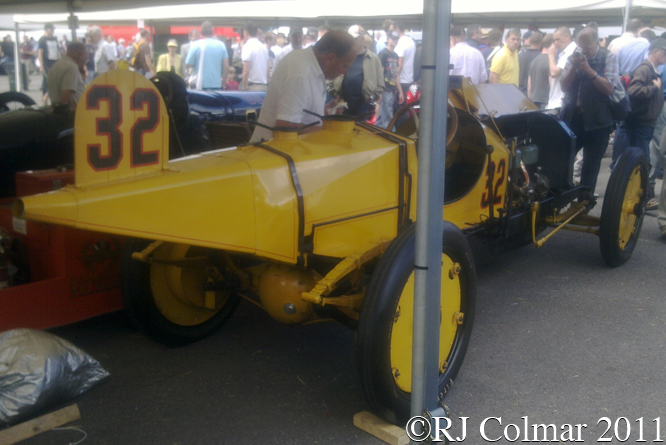
Cyrus was instructed to follow the #28 FIAT for 35 laps before coming in to hand the Wasp back over to Ray, with Ray back behind the wheel David’s relentless pace eventually led to a blow out which handed the lead and eventual victory to Ray in the #32 Wasp.
After changing just four Firestone tyres, three of them offside rears, Ray was credited with a total race time of 6 hours, 42 minutes 8 seconds and an average speed of 74.602 miles per hour, despite an official timing wire being broken during a mid race accident meaning that laps 138 through 176 were not officially recorded !
Ralph Mulford driving a Lozier had changed 14 tyres during the race, losing an estimated 14 mins in the pits, on his way to a second place finish.
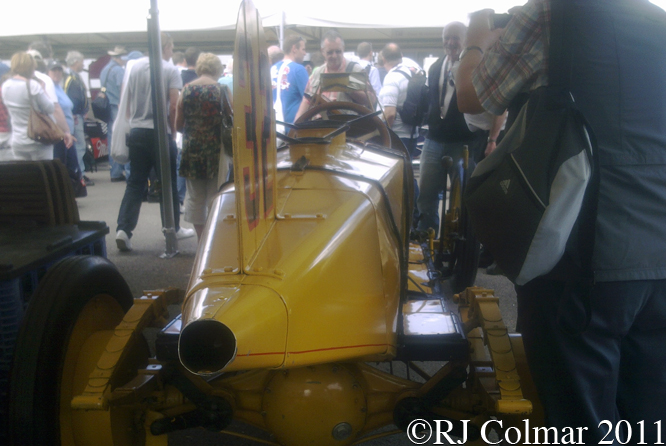
After the race 32 year old Ray announced that 500 miles was “too long a race for one man” and that he was retiring permanently because racing was “too dangerous”.
Ray Harroun, still second in the all time IMS winners list with eight victories recorded between 1905 and 1911, stayed retired from the drivers seat and initially continued working for Marmon until switching to Maxwell, he then worked for the company he founded bearing his own name from 1917 to 1922 before joining Lincoln Products in 1927, he retired from the motor industry aged 79 and passed away a week after his 89th birthday in 1968.
Ray is seen in Ed Arnaudin’s photo below reunited with the Wasp for the 50th anniversary Indy 500 celebrations in 1961, he later admitted that the vibrations caused by the brick surface of the track ensured he “could not see anything anyway” in his innovative rear view mirror.
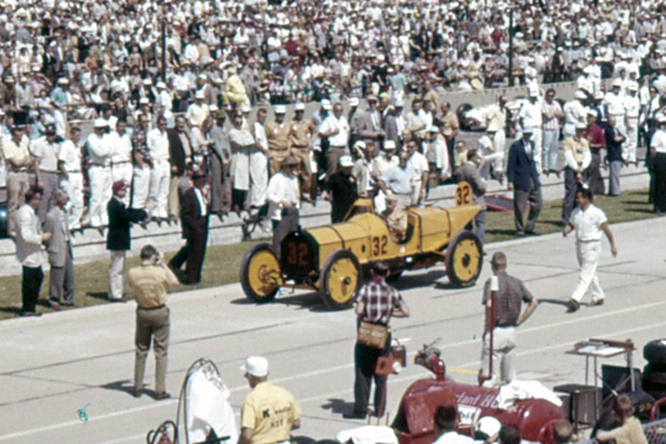
Cyrus Patschke also had a spell at the wheel of the 5th placed Joe Dawson #31 Marmon during the 1911 Indy 500, but never raced at Indy again.
Joe Dawson became the second Indy 500 winner driving for another Indianapolis manufacturer National in 1912.
The Marmon Wasp was kept by Marmon until the 1950’s when it was acquired by the IMS museum and restored by the museum staff AJ Fairbairn, Wilhelm “Bill” Spoerle and Barney Wimmer in 1989.
During the Indy 500 centenary celebrations in May 2011 the Wasp was driven by 1963 Indy winner Parnelli Jones and threw a rod through the block, a botched hasty repair made the problem worse and when the photo’s at Goodwood Festival of Speed were taken in June 2011 the car was not a runner, repairs were effected in 2012 that restored the car to running condition.
Marmon kept manufacturing cars culminating in the Worlds Most Advanced Car until going into receivership in 1933, Jeep designer Arthur William Sidney Herrington rescued the name, which still operates as Marmon Herrington and Marmon Group, initially for various commercial and military vehicle projects but now focuses on axle manufacture and the conversion of vehicles to all wheel drive.
My thanks to Steve Arnaudin for kindly scanning and forwarding the photograph taken at Indy in 1961 that was taken by his late father Ed Arnaudin.
Thanks for joining me on this “Unable To See Anyway” edition of “Gettin’ a li’l psycho on tyres” I hope you will join me again for Mercedes Monday tomorrow.
